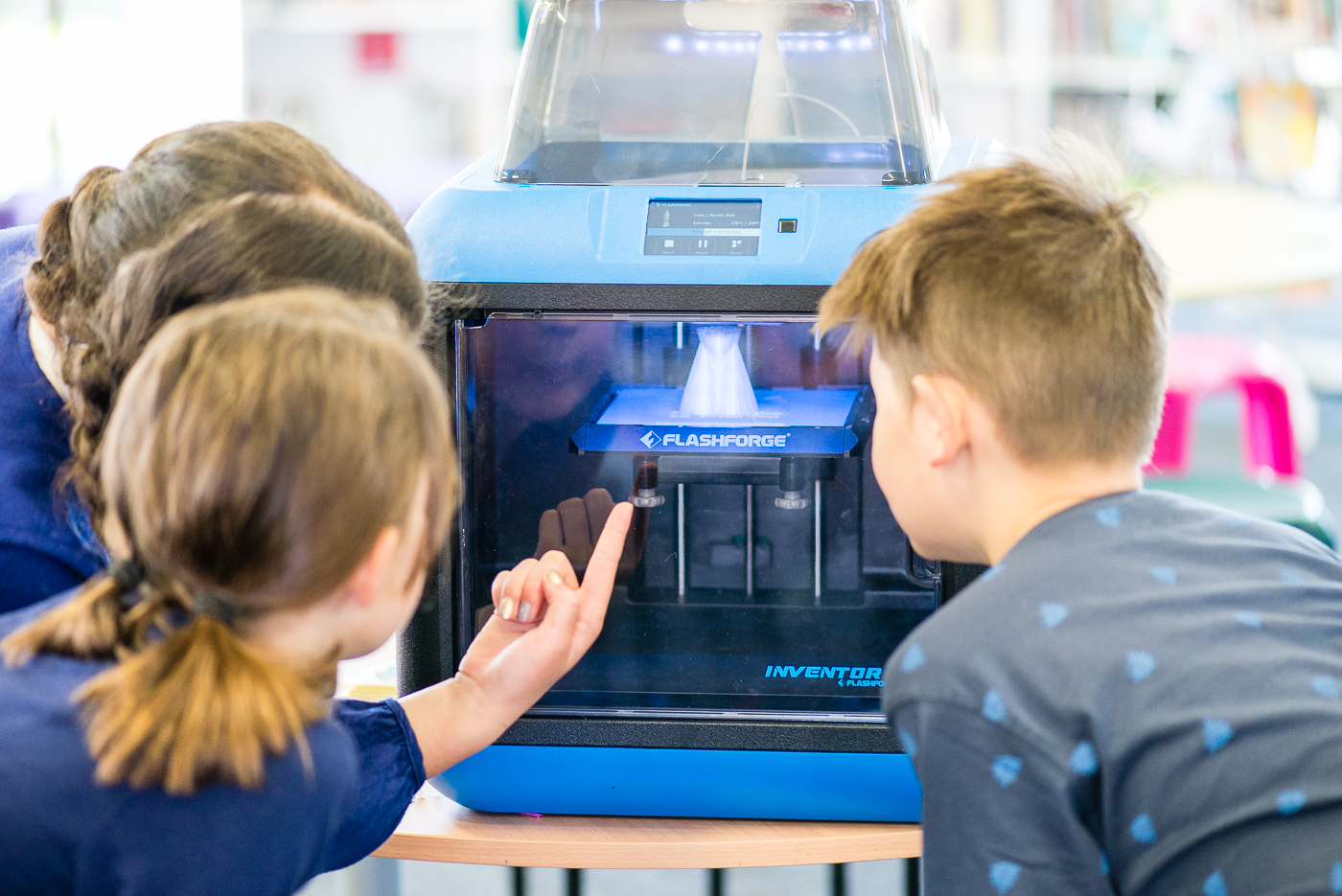At FacFox, we believe in the power of 3D printing to inspire young minds. Our company often hosts “Kids’ Days” where children of our employees get a firsthand experience with this exciting technology. From the thrill of watching their designs come to life on FDM and SLA printers to the hands-on adventure of excavating nylon prints from SLS powder, these events have shown us firsthand the joy and wonder 3D printing can bring to children.
While it’s undeniable that 3D printing offers endless possibilities for creativity and learning, it’s equally important to prioritize safety. Understanding the potential risks and implementing proper precautions is crucial to ensure a positive experience for young users.
In this post, we’ll delve into common safety concerns, provide practical tips, and offer guidance on creating a safe environment for your child’s 3D printing adventures.

Safety Concerns and Precautions
Heat and Fumes
FDM Printers (Fused Deposition Modeling)
These printers work by extruding heated filament through a nozzle. The nozzle and the printing bed can reach high temperatures, posing a burn risk.
- Solution: Close adult supervision is essential. Teach children to never touch the printer while it’s running and to wait for it to cool down completely before handling any parts.
SLA Printers (Stereolithography)
SLA printers use a laser to cure liquid resin into solid layers. While the printing process itself doesn’t involve high heat, the resin can be irritating to the skin and eyes if not handled properly.
- Solution: Children should wear gloves and safety goggles whenever handling resin or cleaning the printer. Ensure proper ventilation to avoid inhaling resin fumes.
Material Safety
Filament and Resin
Different 3D printing materials have varying safety profiles. Some filaments, like ABS, may release fumes during printing. Always consult the Material Safety Data Sheet (MSDS) for the specific filament or resin being used.
- Solution: Choose filaments or resins known to be child-safe, like PLA (Polylactic Acid). Opt for well-ventilated areas and encourage children to wash their hands thoroughly after handling any materials.
Small Parts
The 3D printing process can generate small plastic particles or broken pieces from prints. These can be choking hazards for young children.
- Solution: Keep children away from the printing area during operation and supervise closely during post-processing (removing supports, cleaning prints). Store printed parts safely out of reach of small children.
3D Pen Safety
3D pens are handheld devices that extrude heated plastic filament, allowing users to draw 3D objects in mid-air. While convenient, they share some safety concerns with FDM printers. Solution: Adult supervision is crucial. The pen’s tip and filament reach high temperatures and can cause burns. Instruct children to never touch the tip or uncured filament. Use appropriate mats or surfaces to collect extruded plastic.
Other Considerations
Moving Parts
3D printers have moving parts that can pinch fingers or cause other injuries.
- Solution: Teach children to keep their hands away from the printer while it’s running and to never reach into the machine. Unplug the printer before performing any maintenance or cleaning.
Eye Safety
Exposure to the UV light source in SLA printers can damage eyesight.
- Solution: Never allow children to look directly into the printer while it’s operating. Keep the printer lid closed during printing.
Electrical Safety
As with any electrical device, exercise caution around power cords and outlets.
- Solution: Ensure proper grounding and avoid using the printer near water sources.
Beyond Safety: Fostering a Positive 3D Printing Experience
While safety is paramount, 3D printing offers a fantastic opportunity for children to learn and create. Here are some tips to make the most of it:
- Start Simple: Begin with age-appropriate projects and materials. There are many online resources with kid-friendly 3D models and tutorials.
- Embrace the Learning Journey: 3D printing involves design, problem-solving, and tinkering. Encourage children to experiment and learn from their mistakes.
- Make it Fun!: Incorporate 3D printing into existing hobbies or school projects. Let children’s creativity run wild!
- Safety Gear: Invest in child-sized safety goggles and gloves for handling materials.
- Supervision with a Smile: Provide close supervision while maintaining a positive and encouraging environment.
By following these safety guidelines and fostering a creative atmosphere, 3D printing can be a rewarding and enriching experience for children of all ages.
Ready to dive into the world of 3D printing? FacFox offers a range of professional 3D printing services, from prototyping to production. Our experts can help you bring your child’s designs to life with precision and quality. Visit our website to learn more about our services and how we can support your child’s creative journey!